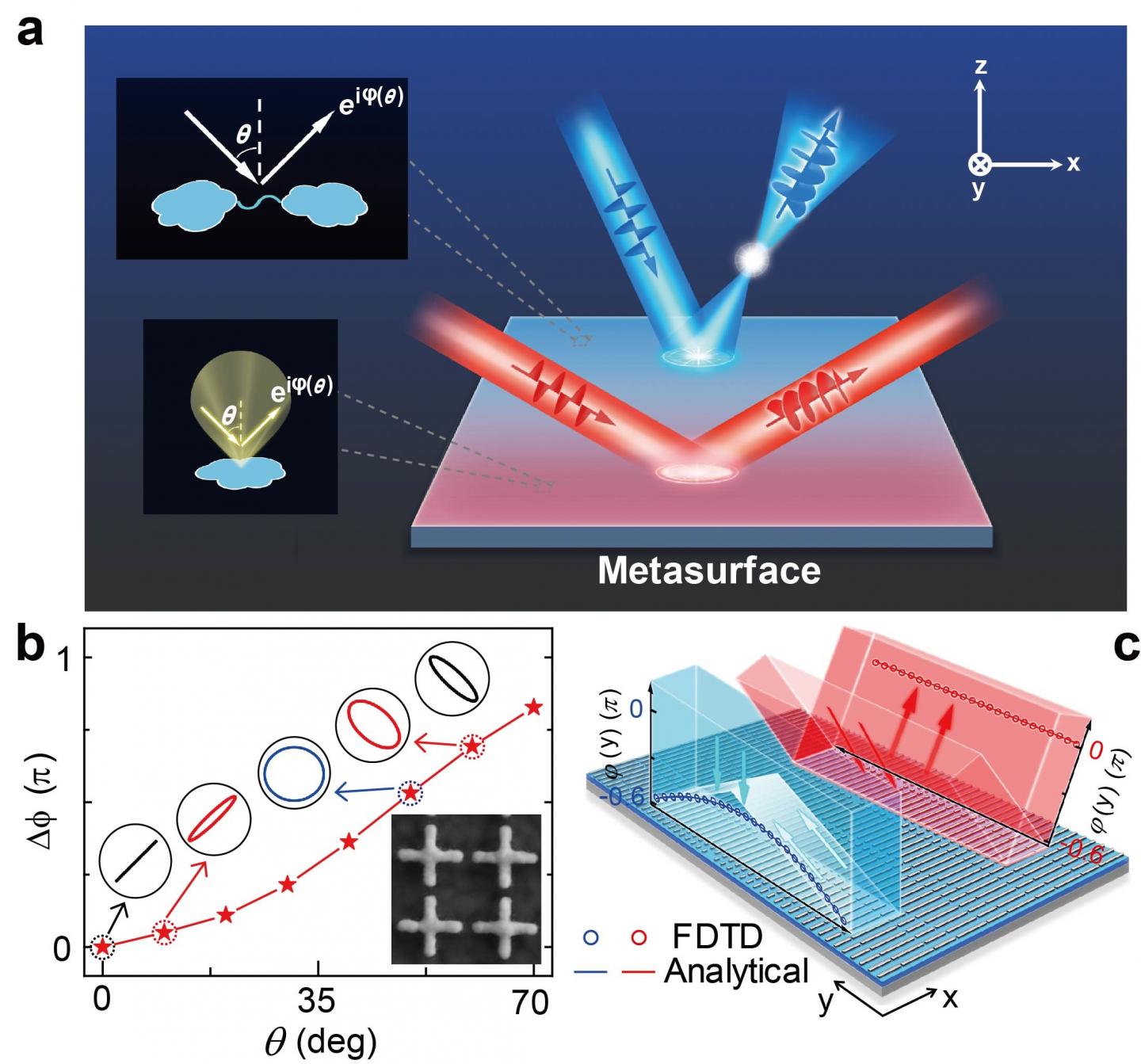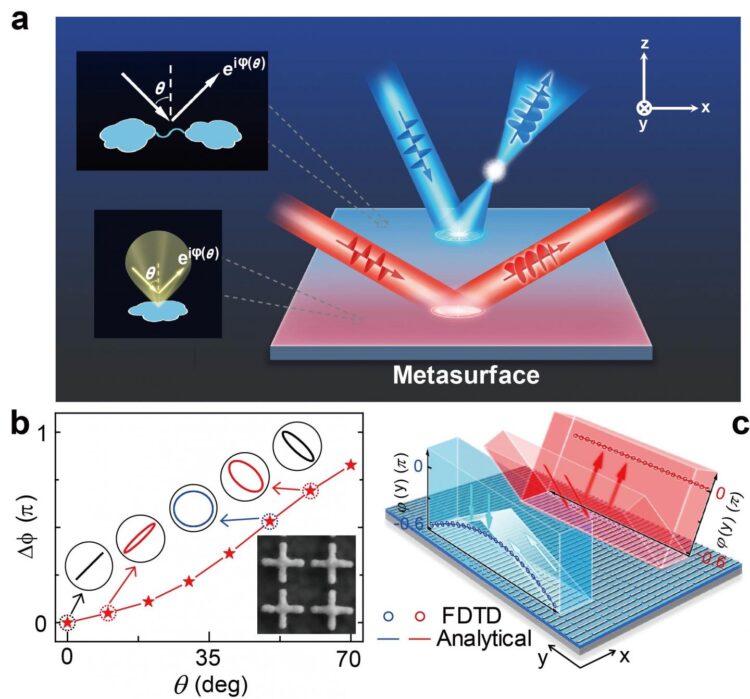
Credit: by Xiyue Zhang, Qi Li, Feifei Liu, Meng Qiu, Shulin Sun, Qiong He, Lei Zhou
Despite of impressive successes already achieved on metasurfaces, most fascinating light-manipulation effects were only demonstrated under normal-incidence excitations. The angular dispersions of the devices, that the responses of such metasurfaces can sensitively depend on the impinging angle, were often overlooked. Obviously, angular dispersion is a critical issue that must be carefully addressed in different application scenarios. Unfortunately, meta-devices realized so far usually exhibit uncontrolled angular dispersions, which were only known after (rather than before) the devices were designed.
In a new paper published in Light Science & Application, scientists from the State Key Laboratory of Surface Physics, Physics Department of Fudan University, China, established a general strategy to guide design optical metasurfaces with fully controlled angular dispersions. They first theoretically and experimentally demonstrated that angular dispersions of metasurfaces are collectively determined by the near-field couplings between meta-atoms and the radiation pattern of a single constitutional meta-atom. Such a complete picture helps the authors to further experimentally realize a series of meta-devices in the near infrared freqeuncy regime, including one meta-polarizer with polarization-control functionality depending on the incident angle, two meta-absorber that can either selectively absorb light at a particular incident angle or absorb light at all incident angles. Finally, the authors numerically demonstrated an angle-multiplexed functional meta-device that can exhibit different controllabilities on the wave-front of light depending on the incident angle. The reported findings establish a new platform for achieving angle-multiplexed functional meta-devices, significantly expanding the wave-manipulation capabilities of optical metasurfaces.
The authors summarized the key scientific achievements of their work as:
“Our findings not only revealed the underlying physics governing the angular dispersions in optical metasurfaces, but more importantly, also significantly expand the capabilities of metasurface in manipulating EM waves by using “angle” as an additional degree of freedom.”
“Our strategy to control angular dispersions is general enough, which can be applied to both transmissive and reflective metasurfaces, and to realize angle-multiplexed meta-devices with arbitrary intendent phase profiles for different incident angles, as long as one can design a set of meta-atoms exhibiting incident-angle-dependent phases covering a whole range of at the desired frequencies.”
“Our finding has explored the angle as a new degree of freedom to control the EM response of metasurfaces. The combination of the angular dispersion control and the gradient metasurfaces design provide much more possibilities to achieve angle-multiplexed functional meta-devices”, the authors forecast.
###
Media Contact
Qiong He
[email protected]
Related Journal Article
http://dx.





